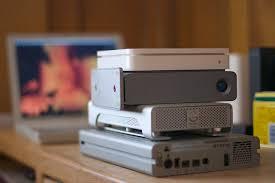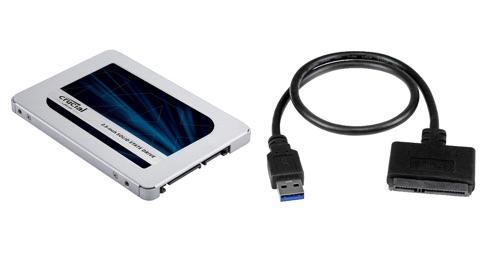Storage Solutions for Making Content at Home


- Roland Boyden
- |
- April 20, 2020
- Roland has been at PhillyCAM as Access Facilitator since 2018 and has worked in public access in some form or other for the past 14 years.
We’ve been getting a lot of questions from all of y’all recently about storage solutions, so I thought I’d put together some of my thoughts.
SD CARDS AND REUSABLE MEDIA
First, whenever possible I like to urge people not to treat SD cards and other reusable media as long term storage solutions, though I myself am terrible at this when it comes to my personal projects. I leave files on a single SD card without copying them for weeks only to realize that I can’t find it when I need it, or I have to film something new and I have no idea which of the files clogging up my SD cards are safe to delete. Generally, I would say it's best to try and copy files off your SD cards as soon as is reasonably possible and then wipe them as soon as you’ve confirmed that the files have copied (ideally to 2 separate places—more on that later). I also consider my desktop, downloads and documents folder a form of ‘reusable media’, not a storage location. Whenever I download a Zoom call or Streamyard recording I try to make sure I never just leave it in the documents folder, but copy it to my external drive and delete it from the computer.
EXTERNAL HARD DRIVES
You can buy the most high-end gold-platted hard drives that claim they never fail, but even they aren’t infallible. For my money, I think a better approach is to use cheaper hard drives, but use more of them to make sure my files are backed up to multiple different locations. That way if one drive fails, I still have another copy somewhere.
In an ideal world, I like to put everything I’m currently editing onto one super-fast SSD for the duration of the time I’m working on it. These drives are expensive but very fast, and reliable. At the same time, I copy all the media to a slower but cheaper HDD hard drive. When I’m done editing, I copy the files to a second HDD and delete it from my SSD drive to make space for a new editing project.
SSDs come in many different flavors. You can buy these really compact ones from the likes of San Disc and Samsung. To save money I’ve started buying bare hard drives meant for installing in a computer and just using this cheap cable to read them on my laptop. This drive from Crucial is a great value. Western Digital Blue SSDs are another product line that offers great value.
For the HDD side of things you can get incredible deals now on 4TB, 8TB, even 14TB and beyond drives. If the budget is limited, I would recommend getting two separate smaller drives, rather than one big one (i.e. get two 4TB drives instead of one 8TB drive). That way you afford yourself that all-important redundancy. Most of these drives come with additional proprietary software and services that I’ve found to be clunky and overall pretty useless so I typically reformat the drive as soon as I get it (click here for more on formatting). Just remember a lot of these drives still rely on older spinning-disc technology where it’s (you guessed it) actually spinning a disc in there, so they aren’t nearly as safe to carry about in backpacks etc.

CLOUD STORAGE
Having all your files on two different drives at all times is SO SO worth it if you aren’t doing that already, but what about if god forbid something happened to your home overall, like a robbery, flood or fire? In that case, two separate hard drives sitting on the same desk aren’t going to help you. For this, uploading files to the cloud is your best bet. Now this gets expensive fast and (especially now) upload times can be really brutal and prevent you from backing up ALL your files. I like to make a mental checklist at least once a month of the files that I just could not live without if something were to happen. What are those truly magical clips, moments, scripts, you-name-it that you’re not sure you could ever reproduce? Those are the files you want to try to get uploaded somewhere if you can. Google offers some of the most affordable expanded online storage through your gmail account, but there are lots of services out there to comparison shop. Here’s a link to a blogpost on that topic.
Okay, so there are some thoughts. One silver lining to this new era of making our shows on Zoom and Streamyard is that the files are way way smaller than what comes out of PhillyCAM’s studio. So you can pile up a year’s worth of shows before you even fill up a fraction of a hard drive. Even so, there’s nothing quite as heartbreaking as having a drive fail and losing original content. Hopefully, some of these recommendations can help us all avoid that.
